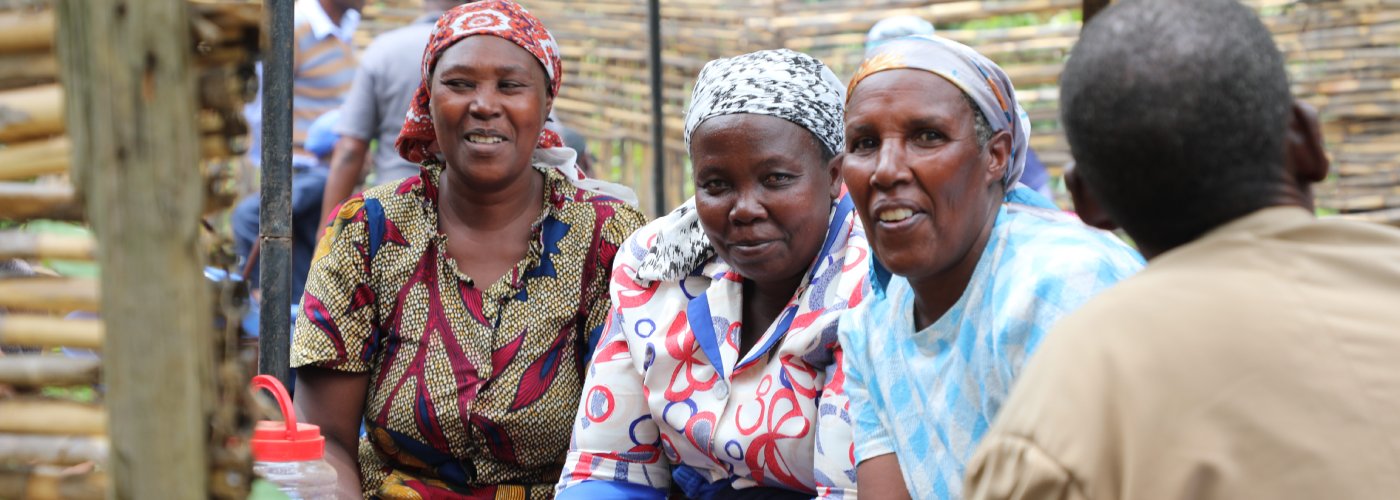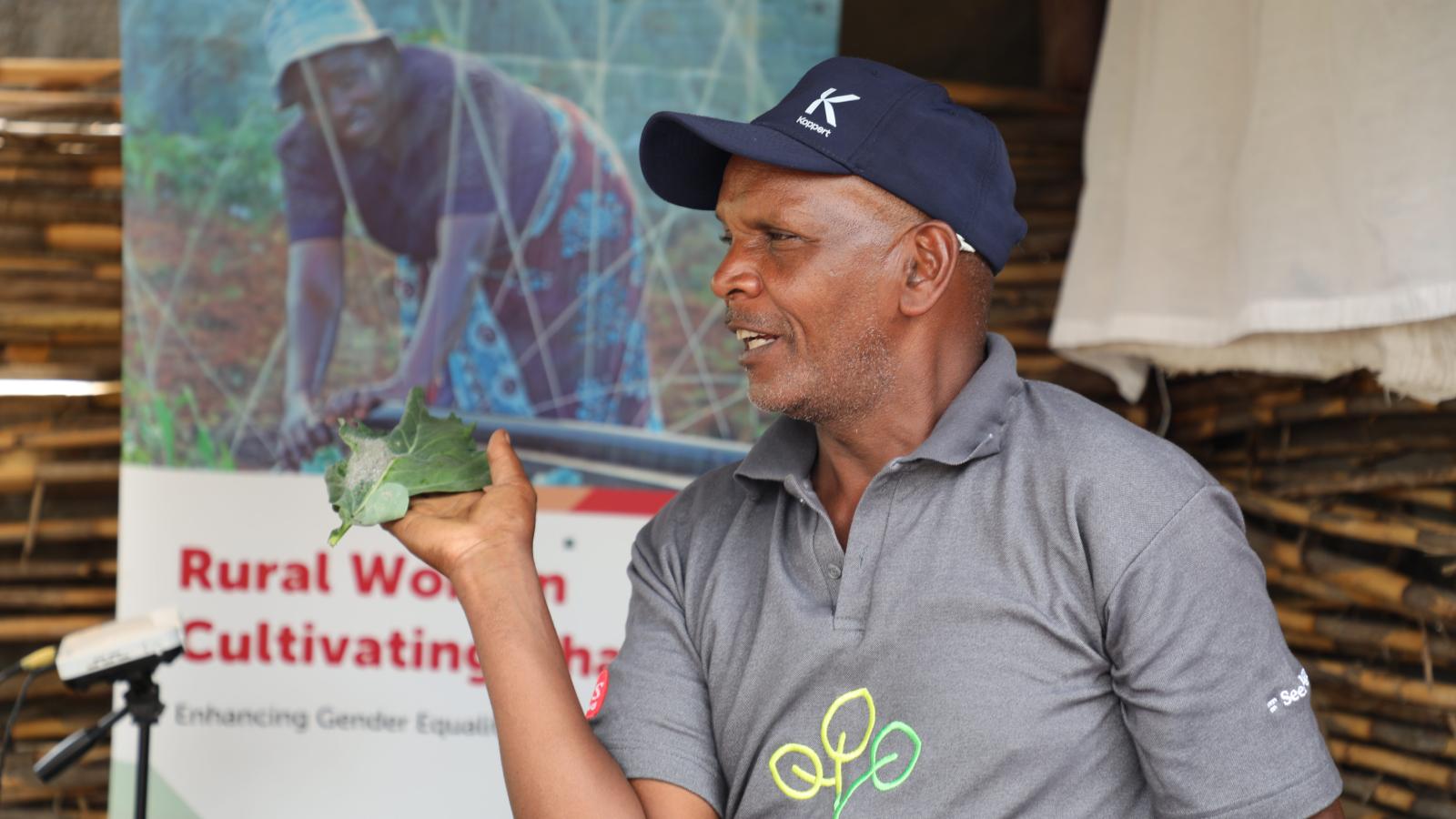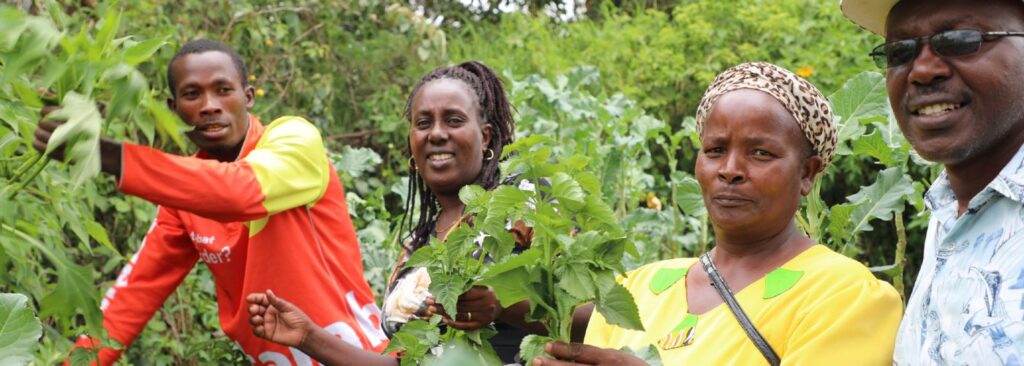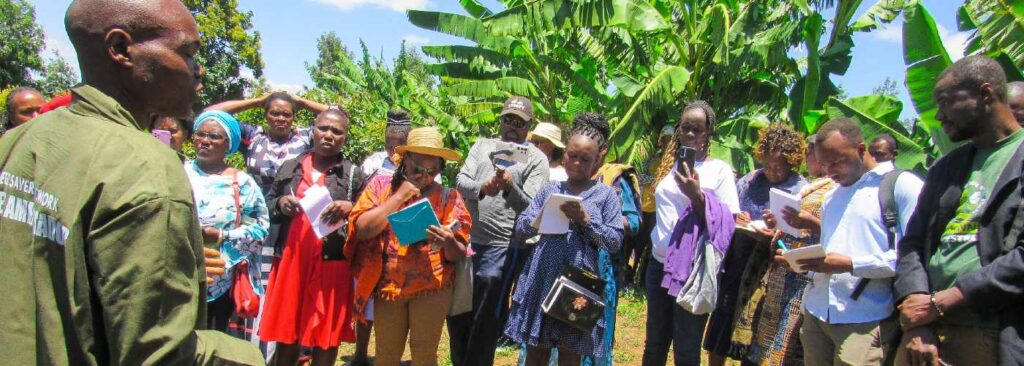Tucked away in Gilgil’s Makongo Ward, a three-hour drive northwest of Nairobi, lies Makongo Village — where farming isn’t just a way of life, it is life. It’s here, amid the rocky, muddy terrain and lush green hills, that 25 community leaders have gathered under the Rural Women Cultivating Change (RWCC) program for an agroecology training that is as transformative as it is timely.
By Cynthia Omondi
As I approach the homestead of Francis Ngiri — a local agroecology pioneer — I meet three women trekking the last stretch on foot after their motorbikes gave up on the worsening road. They look tired but determined, eager to join the training underway.
Inside Ngiri’s farm compound, it’s easy to think we’re in a botanical garden; every inch is alive. Maize stalks sway beside passion fruit vines; banana trees shade indigenous herbs; sacks spill over with freshly dug sweet potatoes. Today, these sweet potatoes have been prepared into a meal to share with the 25 farmers gathered here.
His house is modest, but the surroundings speak volumes. Even the narrow verandah is filled with greenery, functioning as a mini kitchen garden. Beside his home, a small structure boldly reads “Eden Seed Bank.” Inside, shelves brim with tiny, neatly labeled packets of seeds — many saved from more than a decade ago. In a time when many farmers are forced to buy seedlings each season, Ngiri is a rare custodian of indigenous seeds and independence.
The first day of many
Delayed by the rough roads, we get into the first session at a lively and focused moment. Group leaders are deep into their presentations, sharing findings from a hands-on assignment that involved collecting and comparing two soil samples, one fertile, one less so —and identifying pests from plants visibly under attack. After a quick settling in, we introduce ourselves, and the session smoothly resumes.
Ngiri speaks passionately, pacing as he warns of the dangers of chemical pesticides and the environmental cost of careless farming. “We should live and let live,” he says. “If you kill the pests with poison, you poison yourself too.”
His words ignite memory; he asks the group to recall their childhood — when food was plentiful, when the land was generous. Many nod solemnly, reminiscing about the 1960s and 70s, and how today’s food seems to cost more, yield less, and perhaps, even bring sickness.
A turning point in pest control
Dorcas Njoroge, one of the trainees, shares her current approach to pest control. “I always start by reading the instructions on the pesticide and make sure I wear full protective gear. I cover my nose and make sure I’m safe before I spray,” she explains.
Ngiri, ever the engaging teacher, poses a thoughtful question: “If we must wear all that protection, then why are we spraying something that’s dangerous to ourselves on the food we eat?”
Laughter and uneasy murmurs follow. The point lands.
He continues the lesson using simple, relatable examples. Talking about soil fertility, he asks, “Between forest soil and farm soil, which one is more fertile?” They answer in unison, “Forest soil.”
“And why is that so? No one adds fertilizer in the forest,” he laughs. It’s a gentle nudge toward organic solutions — compost, manure, mulching — already within reach.
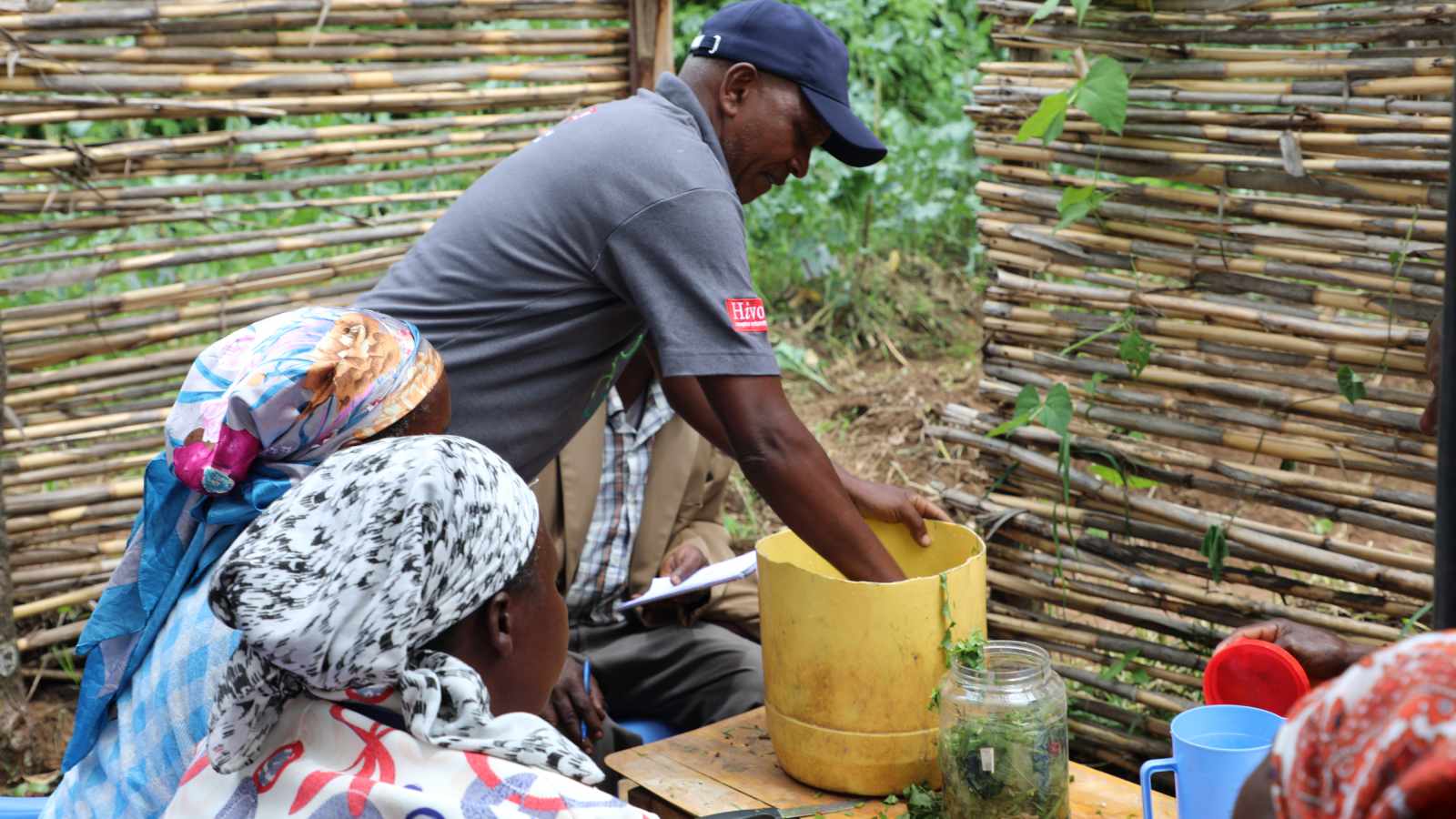
From theory to practice
After the discussion, Ngiri introduces the day’s practical session: making organic pesticides using local resources. The farmers break into three groups, each assigned a different solution.
One group heads out to fetch firewood, which they burn to produce ash. They then grate bar soap and mix it with the ash and water to create a natural spray.
The second group walks toward the edges of the farm, gathering bitter herbs known locally for their pest-repelling properties.
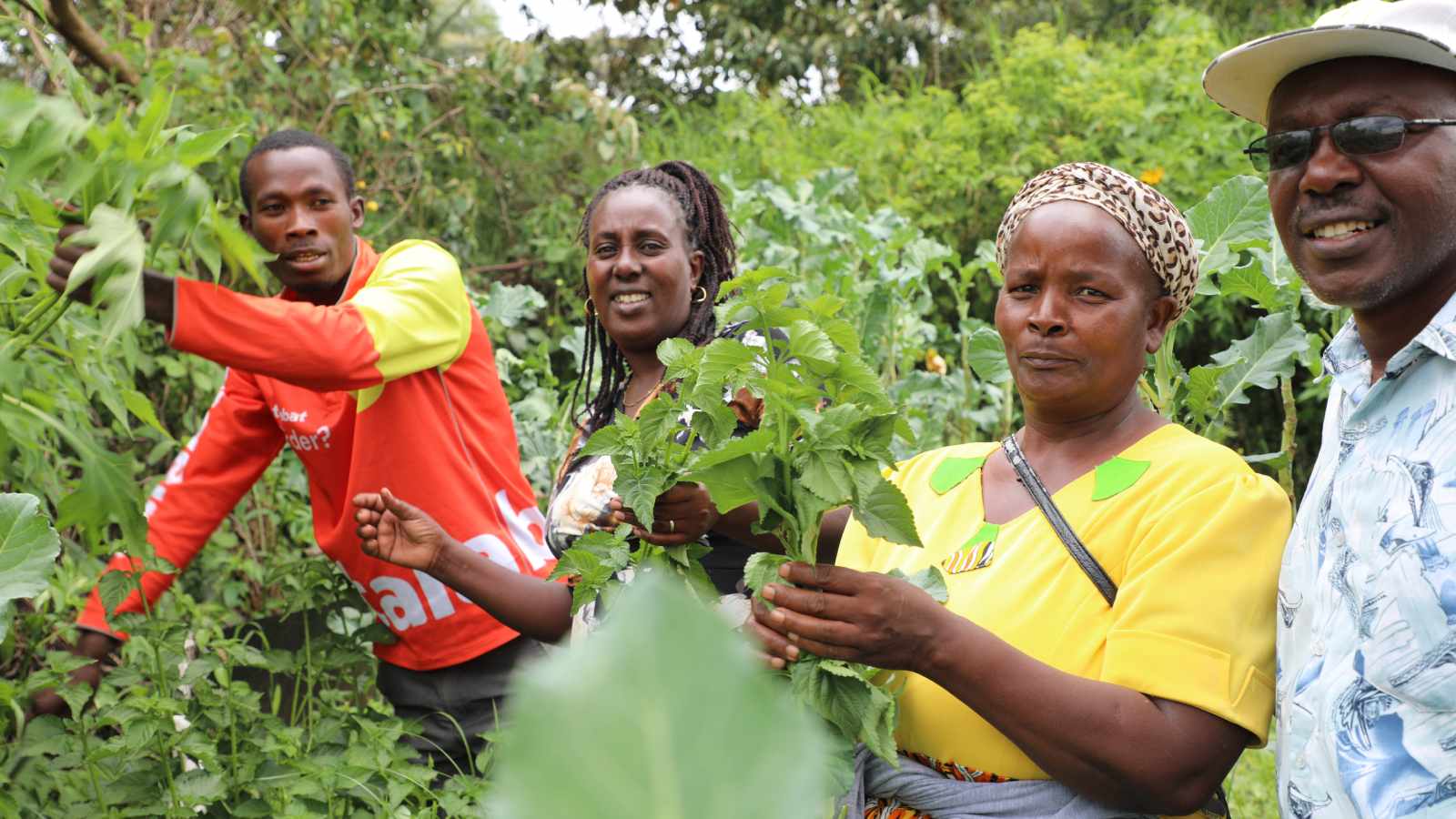
The third group ventures deeper into the greenery to collect plants used in making fermented plant extracts — another potent pest control method.
After each team prepares their remedy, they rotate to learn from one another. By the end of the practical, every participant has not only observed but taken part in making all three organic alternatives. There’s pride in their eyes — and purpose.
Knowledge that multiplies
Agroecology isn’t just a farming method; it’s a philosophy. It challenges extractive agriculture, where profit often trumps health and sustainability. And as Makongo’s training shows, it is deeply empowering — returning control to those who’ve long been sidelined.
Dorcas beams. “Imagine how much we spend on pesticides. And now, we know we have solutions right in our own homes.”
Hellen Wanjiru, another farmer, dreams of expanding her orange harvest by December. “But beyond that, I want to do it safely, sustainably,” she says, her eyes fixed on the horizon.
These women are not just learning for themselves; they are learning for hundreds more. Each of them leads a Community-Based Organization (CBO) and will soon repeat the day’s training with over 850 farmers in their respective areas
As they walk home, shoes muddy but spirits lifted, they carry more than just knowledge. They carry the seeds of change. And when rural women cultivate change, the whole world reaps the harvest.
About the program
The Rural Women Cultivating Change program (RWCC) supports rural women, female-headed households, and gender-based violence survivors. Through the GALS methodology, women gain leadership skills and learn to advocate for land rights and reduce gender-based violence. The project partners with local organizations to strengthen climate-resilient food systems, improve women’s livelihoods, and increase gender equality in rural communities.

